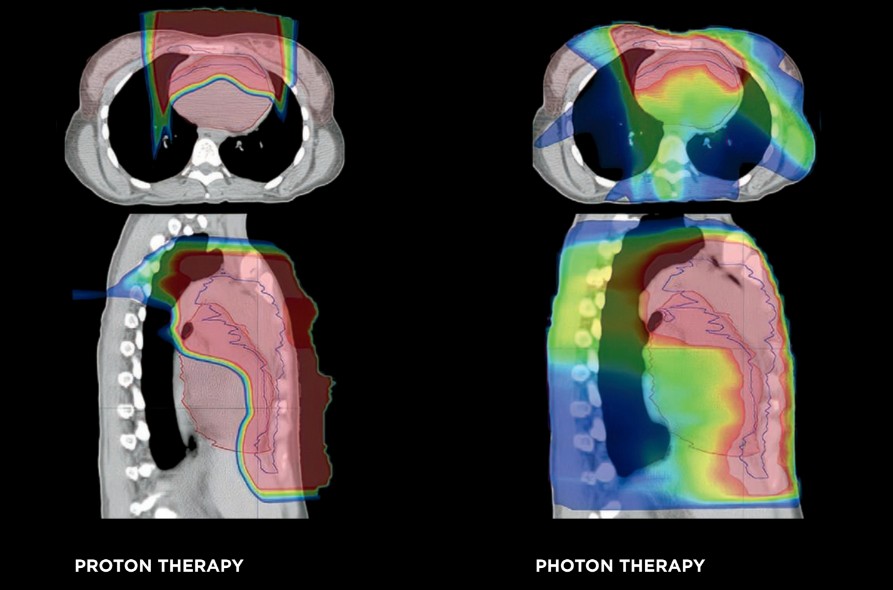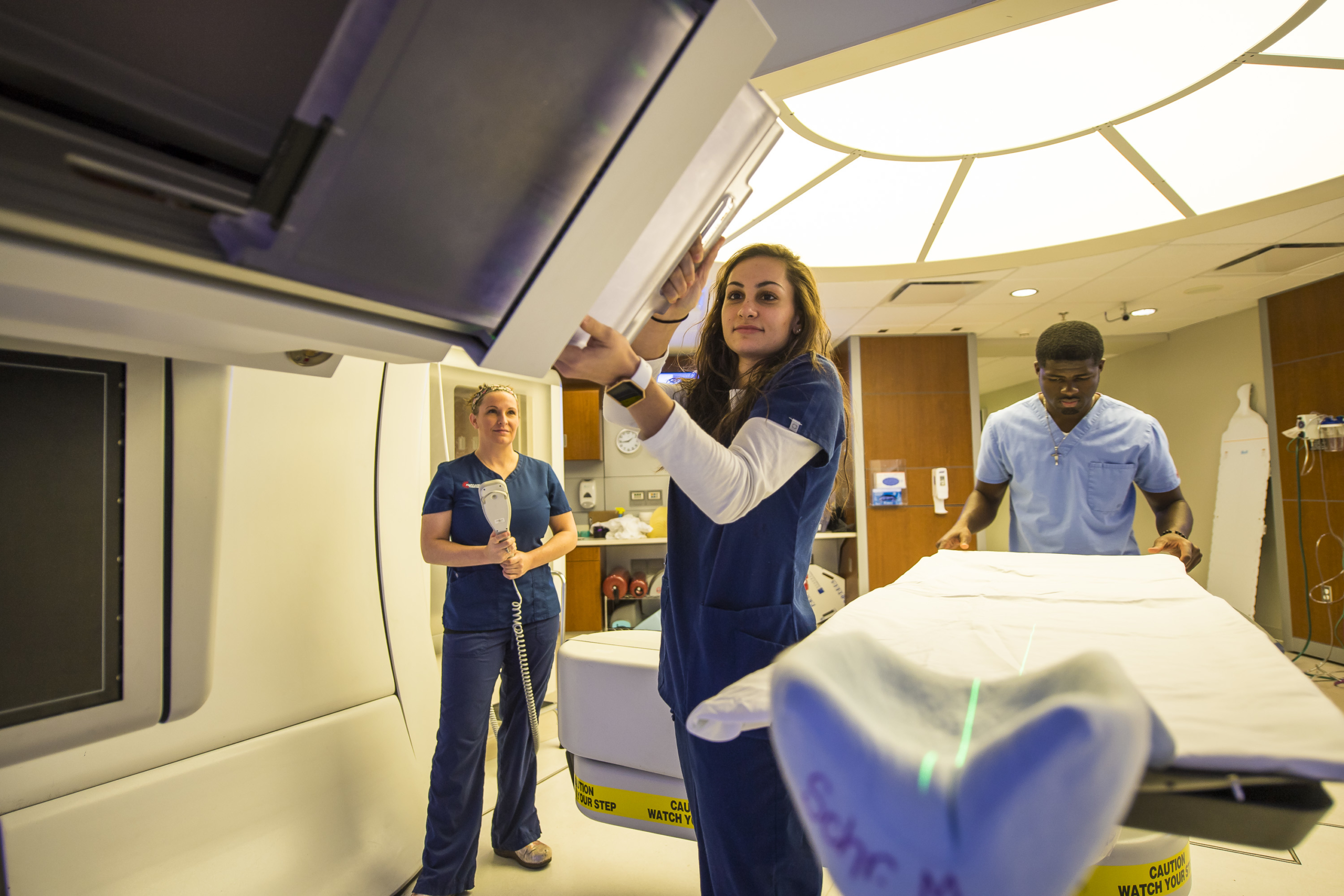Eradicating Lymphatic Cancers with New Treatments
January 30, 2024
In the ever-evolving landscape of cancer treatment, researchers and medical professionals are constantly seeking innovative ways to enhance efficacy while minimizing the impact on patients’ overall well-being. Proton therapy has emerged as a promising avenue, offering a more precise and targeted approach to treating various cancers, including lymphoma. Lymphoma survival rates are continuing to rise with the five-year survival rate for Hodgkin lymphoma around 89% and non-Hodgkin’s lymphoma at 73.8%, depending on stage and patient age.
Generally, radiation therapy is indicated for most lymphomas, sometimes in concert with chemotherapy. There are a few low-grade lymphomas that respond well to very low palliative doses of radiation therapy using photons, while for others, more intensive radiation levels are indicated. A large percentage of patients recover and go on to live long, healthy lives. For this reason, minimizing the radiation dose to nearby healthy tissues – such as the heart, lungs, breast, and esophagus – is necessary to reduce the risk of developing future medical issues including secondary cancers as a result of radiation exposure.
Dr. Zaker Rana
Assistant Professor of Radiation Oncology, University of Maryland School of Medicine
Consideration for Proton Therapy
Lymphoma can affect individuals of all ages, including children. Proton therapy’s capacity to spare developing tissues and organs from excessive radiation makes it a particularly attractive option for pediatric patients, offering hope for effective treatment with fewer long-term risks.
Proton radiation therapy, in contrast to intensity modulated radiation photon therapy, is precisely administered through a pencil-sized beam, stopping at the site of the tumor and limiting unnecessary radiation exposure to nearby organs like the heart, lungs, breast, and esophagus. This can be especially helpful as many patients are young and with these highly curable cancers, have many decades of life remaining. Proton therapy for lymphoma has been shown to minimize long-term impact related to heart disease, lung cancer and breast cancer, especially for people who have previously received chest radiation.
In addition, the use of proton therapy can reduce side effects for the patient. While patients may experience fatigue and a sunburn-like redness or soreness in the area where the beams were directed, proton treatment rarely affect the patients’ ability to perform activities of daily living, and they can return to work and resume normal activities the same day.

Treating Hodgkin Lymphoma
With Hodgkin lymphoma, the mediastinum is often involved, including major blood vessels, the esophagus and the heart. Typically, radiation is warranted and the use of protons is encouraged to spare nearby organs and tissues like the heart, esophagus, lungs and cardiac substructure, including the coronary arteries, valves and the electrical conduction pathway and pumping mechanism. This generates a cure rate of up to 90% and decades of quality life thereafter. In female patients, the use of proton treatment can also be used to reduce dose to normal breast tissue, potentially decreasing the risk of radiation induced breast cancer.
Older radiation techniques have shown to elevate the long-term risk of breast cancer, lung problems and cardiac issues due to the consequences of those treatment modalities. Even with advancements in photon-based techniques, it’s apparent that there’s still excess mortality risk or notable problems down the line in these areas. Proton therapy substantially reduces exposure to the heart, lung, breast and circulating immune cells and blood cells, even compared to the most advanced forms of photon therapy.
Treating Non-Hodgkin’s Lymphoma
Non-Hodgkin’s lymphoma most often appears after age 50 in the chest, abdomen, neck, stomach, kidney and salivary glands. In some cases, this is treated with chemotherapy alone. If the tumor is confined to a specific area or considered bulky, measuring larger than determined criteria based on type, then radiation is indicated.
Radiation for non-Hodgkin’s lymphoma is used definitively to cure the patient, not just relieve symptoms. Radiation therapy using proton therapy may be the preferred option when the cancer is located in the head and neck, mediastinum or abdomen. Often, we’re able to get the necessary dose to the tumor more comprehensively than with photon therapy and do so without providing unnecessary dosage to tissues located nearby. Getting the dosage to the exact spot makes sense.
Evaluating the Use of Proton Therapy
Recent research studies have produced encouraging results regarding the use of proton therapy in lymphatic cancer treatment.
When proton therapy was used in combination with free breathing and deep inspiration breath hold, proton therapy has yielded favorable results with lower radiation to the lung and less lung inflammation than photon therapy for patients with relapsed/refractory Hodgkin lymphoma and aggressive non-Hodgkin’s lymphoma. Proton therapy has also been shown to reduce the toxicity of combining chemotherapy and radiation therapy for patients with mediastinal Hodgkin lymphoma, and subsequently yielded reduced cardiac and secondary cancer risks.

As further study continues yielding positive results, proton therapy is emerging as a treatment with extreme benefit to patients with lymphoma. More targeted implementation, reduced side effects and lower incidence of recurrence and secondary cancers make proton therapy a strong consideration for today’s lymphoma patients.



